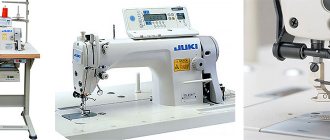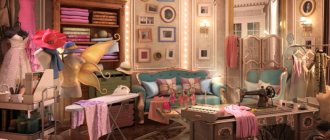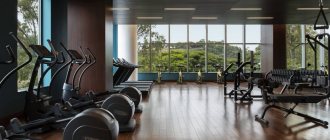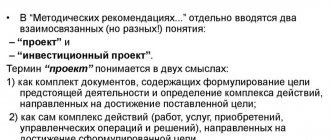* The calculations use average data for Russia
from 150,000 ₽ Starting investments
155,000 ₽ Revenue
50,000 ₽ Net profit
6-8 months Payback period
An atelier is a women's business that is quite easy to organize with minimal investment. As in many other areas of activity, the basis for success is the skill of the staff and location.
An atelier is a business that is quite easy to organize and is considered a woman's occupation. You can open your own studio with minimal costs and in a short time. If you know how to sew and dream of opening a mini-business, then the atelier idea will suit you.
Market Review. The relevance of the atelier as a business
In the field of consumer services, which includes atelier services, there has been an increase in demand recently. According to statistics, every year there are twice as many ateliers opened as there are closures. Annual growth in this area is about 10%. Even in times of crisis, the atelier’s services are in demand, because people begin to save on clothes and more often turn to the atelier for repair services.
The two main services of the studio are tailoring and clothing repair. In the last few years, the demand for tailoring has decreased - the market is overflowing with ready-made products, which, moreover, are often cheaper than those made to individual standards. The situation with modern light industry is known to everyone: the overproduction of inexpensive and low-quality Chinese clothing has “corrupted” the taste and culture of the consumer. He has lost the habit of mending his dress, generally loving it, respecting it and treating it with care. The consumer has long been accustomed to throwing tons of everything into the nearest trash bin, immediately buying a ton of new things, “from the latest collection.” Therefore, today people who need the modification of their clothes more often turn to the services of a seamstress - shorten their trousers, fit them to their figure, etc. That is why clothing repair points began to open actively in shopping centers.
Ateliers can be roughly divided into two categories. The former rely on wealthy clients, the latter, on the contrary, on people with below average income. Accordingly, the range of services is slightly different. The first category of workshops is focused on creating individual clothing - for example, business suits. Profit comes from completing several, but expensive, orders. Such a business, as a rule, relies on wealthy and regular clients who come to the studio from year to year. The second category of workshops fulfills small orders and makes money on their quantity.
Advantages of the atelier as a business:
- atelier services are in demand in any locality;
- high demand for this type of service, even during periods of economic instability;
- opening a studio requires minimal investment, which can be recouped in a few months;
- a small studio needs a minimum of equipment and tools. The main thing is a good master.
Many people think that opening a studio is very simple: find a premises, buy a sewing machine - and you can expect profit. However, in practice everything will not be so rosy. Many studios go bankrupt and close without ever breaking even. In order for the business to develop successfully, you should take into account many nuances, research the sales market in advance and draw up a business plan for the studio. Therefore, we will consider in detail each stage of opening an atelier and the features that need to be taken into account.
Risk analysis
Like other factors indicated in our business plan, the risks for the atelier will be very specific. However, this does not mean that they cannot be prevented:
- The need to work with non-standard figures. You will definitely encounter this risk, because a person with a standard figure can buy clothes in a regular store. You may have to work with clients who are overweight or have physical disabilities. You need to be prepared for this.
- Unqualified personnel. Unfortunately, the seamstress profession has ceased to be in demand in recent years, so it is difficult to find really good craftsmen. Give preference to promising specialists; in the future, you will be able to help improve their qualifications through courses and trainings.
- Constantly changing fashion trends. News from the fashion world will constantly have to be studied and adapted to it if you want modern people to be among your clients.
- Seasonality. This factor has already been mentioned above. Reducing its impact is not difficult - just change the range of services depending on the time of year.
Opening your own atelier is an excellent business option for a small initial investment with good opportunities and growth prospects.
Who can open a studio
A seamstress, tailor, or cutter can open their own business. Typically, studio owners are good craftsmen who understand the intricacies of sewing and know the market. This option will be preferable. However, even if you are far from sewing, you can realize yourself in this business as a manager, and entrust all production work to hired employees. And yet, many note that the atelier - especially with the custom tailoring service - is, first of all, creativity. Therefore, it is impossible to live here without a soul. Knowledge of the specifics of the work and an individual approach to each client will help you achieve success in this business.
Description of service
This article will discuss the business plan of a small atelier engaged in sewing and repairing ready-made clothing according to the orders of its clients. The possibility of restoration of textile products is also assumed. Sales of finished products will be carried out through the studio itself, where professional employees will work.
We will consider the legal aspects of this business, existing risks and difficulties, calculate planned income and expenses, and draw conclusions about the level of profit and payback.
Market analysis
Before opening a studio, you need to study the market for sewing services in your city. It is important to understand whether there is a free niche: you can determine the approximate number of studios using services such as Yandex.Maps, Google Maps, 2GIS. Find out the cost of your competitors' services and the services they offer. In addition, you will need data on the area's population and income levels to identify your potential customers. The collected information will allow you to assess business prospects and determine what competitive advantages you will have.
Room for a tailoring studio
The recommended premises area for opening a clothing business is 30-60 sq.m. You need to open a sewing studio for a small business in places with high traffic, on the first or ground floors of residential buildings, shopping centers, in one of the pavilions of the clothing market. It is advisable to have a good fabric store nearby. The premises itself will include:
- sewing factory;
- showroom;
- dressing room;
- room for staff to rest and eat.
Premises requirements:
Voltage 380 V. Illumination in accordance with SanPiN 2.2.1-2.1.1.1278-03 is significantly greater than in ordinary residential premises. Depending on your financial capabilities, you can buy or rent premises. We will consider a rental option for a residential area, which will cost approximately 20,000 - 30,000 rubles. per month including utility bills. At the same time, you will have to spend at least another 20,000 rubles one-time on finishing and repairing the premises.
You may be interested in: Phytowalls: 3 ways to make money from an environmentally friendly business
List of studio services
At the next stage, you need to determine what exactly the studio will do and what audience its services will be aimed at. In addition to custom tailoring, clothing can also be repaired, restored or altered. Depending on the list of services, equipment and staff are determined. For example, if you plan to provide a custom tailoring service, then you need to make certain demands on the seamstress.
What services can the studio provide to clients:
- hemming, shortening clothes;
- design and tailoring of evening dresses (dresses for prom are often in demand);
- repair of old items (replacement of collars, fasteners, etc.).
- replacing zippers, steaming, repairing and making pockets, re-stitching buttons, replacing a collar or cuff, etc.;
- sewing carnival costumes for children (in demand before New Year's parties);
- sewing school suits;
- sewing copies of famous designers (also in demand, since it is still cheaper than the original);
- sewing curtains;
- urgency of order execution (20-50% of the cost of work is added).
It is recommended to start with a clothing repair shop, and then, having developed a client base and established a foothold in the business, move on to individual tailoring. The costs of opening a clothing repair shop are much lower than those for sewing clothes.
Having decided on the list of services, make a price list. Find out what prices your competitors are offering and lower yours a little. At the initial stage, this will attract customers. But be careful with price dumping - don’t work at a loss. Set a price that can recoup your costs. To understand the calculations, create a business plan with calculations of expenses and income and an analysis of the strengths and weaknesses of the business. In addition, you will definitely need a business plan if you decide to take out a loan to start a business.
Price list for sewing studio services
When compiling a price list for sewing workshop services, be guided by the prices of competitors. Make them a little lower in the opening and promotion phase. This will attract customers. Sample list of clothing repair services:
- Adjustment to the figure of outerwear;
- Customization of everyday clothes;
- Fitting a men's suit;
- Shorten/lengthen the bottom of outerwear;
- Replacing zippers;
- Repair of leather products with liquid leather;
- Hose repair;
- Steaming;
- Minor repairs.
Studio registration
How to register a company for sewing and repairing clothes? In order to conduct commercial activities, you need to register your business. You can choose the form of individual entrepreneur or LLC. The difference is that if you are the only owner of a business, you should register it as an individual entrepreneur. This will significantly facilitate accounting and simplify taxation conditions.
To register as an individual entrepreneur, you will need a passport and an application for state registration. registration, a receipt for payment of the state duty (800 rubles), as well as a copy of the TIN certificate. If you decide to open a studio together with the founder, you will have to register as an LLC. Also, for registration you will need to indicate the appropriate OKVED codes.
The most suitable OKED codes for an atelier:
- 95.29.1 Repair of clothing and textiles
- 52.74 Repair of household products and personal items not included in other categories
- 18.2 Manufacture of clothing from textile materials and clothing accessories
- 18.24 Production of other clothing and accessories.
The next step is to obtain all necessary permits from Rospotrebnadzor and similar state authorities. institutions. You will have to spend about 5,000 rubles to obtain all permitting documentation.
The SES requirements require the preparation of the following documents:
- production control program;
- conclusion of Rospotrebnadzor on the compliance of the premises with standards;
- permission from Rospotrebnadzor to carry out activities;
- contracts for the removal of waste, hazardous substances, disinfection.
Equipment selection
You should consider purchasing industrial sewing equipment from sewing shops. This is advantageous in that the price will be lower than similar new ones. Establish connections with specialists, mechanics who service these machines and know a lot about them.
Basic set of equipment for a clothing tailoring and repair shop:
- Industrial lockstitch machine;
- Overlock;
- Steamer;
- Iron;
- Cutting table;
- Mannequins;
- Consumables: scissors, needles, threads, pins, buttons, zippers;
- Mirror in the fitting room;
- Hangers;
When expanding production capacity, and to fulfill certain categories of orders, sewing machines may be required:
- Chain stitch;
- Lockstitch;
- Furrier
- Zig-zag stitches, curly zigzag
Choosing a room for a studio
The most significant issue when organizing an atelier is finding suitable premises. It is important to choose a convenient location, as the profitability of the business depends on it. According to statistics, atelier attendance is 70% dependent on where it is located. Most often, a person who needs such services simply looks for a nearby studio or chooses something that is “along the way.”
There are two options for atelier premises: renting retail space in a shopping center or in a residential area. Each of them has its own pros and cons. The table shows a comparison of these options. The choice depends on the target audience and the concept of the studio.
Comparison of premises for rent
| Room in a shopping center | Room in a residential area | |
| pros |
|
|
| Minuses |
|
|
The studio operates only during the daytime and does not create much noise, so it can easily be installed on the ground floor of a residential building. This studio will be open from 9:00 to 19:00. In the shopping center, the studio will have to work on a schedule from 10:00 to 22:00 - while the shopping center is open. Renting a room located on the ground floor of a residential building will cost on average 12-15 thousand rubles. You will have to pay about 20-25 thousand rubles monthly to rent a pavilion in a shopping center.
A good option would be the proximity of the atelier to fabric or clothing stores. To increase the influx of customers, you can agree with nearby stores so that consultants, if necessary, recommend your atelier to their customers.
Requirements for the studio premises:
- area of at least 10 sq.m. Optimal – 20 sq.m. The room should not be so small that it causes attacks of claustrophobia in visitors - they associate cramped space with the pettiness and frivolity of the company.
- availability of electricity;
- the room must be divided into at least 3 zones: a reception area with a fitting cabin, a cutting and sewing shop and sanitary rooms (storeroom, toilet, staff room)
- the lighting of the seamstress’s place of work must meet special standards, which are five times higher than the requirements for residential premises;
- for professional sewing equipment you need a voltage of 380 volts;
- availability of good ventilation;
- light walls that can withstand frequent wet cleaning;
- absence of surfaces that retain small sewing waste.
In order to provide studio services, it is not necessary to rent a separate room. You can open a business from home. How to organize a studio work from home? Clothing measurements can be taken at the client’s home, and mini-production can be located in your home. The difficulty with this idea is finding new clients. You will need to place an advertisement on a site like Avito, hang a signboard or an advertisement in the elevator, or rely on word of mouth.
Organization of atelier work
In order for a business to flourish, it is necessary to properly organize the work of the studio from the first day. The workshop must be fully staffed before opening. If it's a small family business, it's easy. It is necessary to correctly distribute responsibilities between relatives, formalizing some business relationships with a contract or receipt. If an atelier is opened with hired staff, it is very important to take into account all the nuances of the legal formalization of the relationship. There is a Labor Code, so all business relations must be subject to its standards. The basis for hiring a seamstress or accountant, manager or courier should be a contract, in which the responsibilities and rights of the parties must be spelled out in the most careful manner so that difficult situations do not arise in the future. It is better to use the same operating mode as that of competitors. Usually these working hours are from 9.00 to 20.00. Working on weekends is at the discretion of the manager. If the studio is located in a shopping center or market, then it is necessary to work on weekends. At this time there are the greatest number of visitors. Before opening the studio, you need to carry out an advertising campaign, distribute invitations, make bright signs, advertisements, launch advertising in the subway and on television. People are very well attracted by promotions that can be timed to coincide with the opening of the salon, discounts, and gifts. Your studio should be remembered, so you need to choose a beautiful name and make an interesting sign. How to name a tailoring and clothing repair shop, professionals will help you. There is no need to skimp on such services - they will pay off handsomely. How to open an atelier from scratch and how to promote an atelier can be learned from successful entrepreneurs. There is a lot of such advice now.
Online advertising for a clothing repair and tailoring shop
The work of the studio must be planned for the future. Advertising on social networks is very popular today. Use the power of the Internet to promote your business. Through special websites you can not only buy equipment, hire qualified personnel, but also receive profitable orders and show your products to the whole world. The owner of a business must sense changes in the industry and promptly respond to changes in fashion and preferences. To do this, you need to study demand and constantly be interested in new products in the clothing industry. Learn from the masters of this type of activity, adopt positive experience. By constantly improving, learning new things both in sewing and in business, there is a prospect of creating a truly profitable studio that brings financial profit to the owner, quality products to consumers and moral satisfaction to all members of society.
Good luck in business!
Purchase of equipment for the studio
To work, you need to purchase equipment. An approximate list of equipment is given in the table. The amount of investment required to purchase equipment is 70 thousand rubles.
Studio equipment
| Equipment | Quantity, pcs. | Price (pcs), rub. | Price (total), rub. |
| Sewing machine | 2 | 10 000 | 20 000 |
| Overlock | 1 | 15 000 | 15 000 |
| Steam iron (steamer) | 1 | 7 000 | 7 000 |
| Regular iron with ironing board | 1 | 3 000 | 3 000 |
| Tools and consumables: scissors, patterns, rulers, needles, pins, thimbles, centimeters, etc. | — | 5 000 | 5 000 |
| Fitting room | 1 | 8 000 | 8 000 |
| Furniture and lighting | — | 12 000 | 12 000 |
| Total: | 70 000 | ||
Before purchasing the necessary equipment, you should understand what factors influence its price:
- manufacturer country;
- functionality of studio equipment;
- the material from which it is made, its quality indicators;
- company (there are little-known companies that demonstrate good quality, but are much cheaper).
In addition to professional equipment, you will need some furniture and lighting. The furniture should be comfortable, the lighting should be bright enough. These are comfortable working conditions.
Financial plan
To learn how to create a financial section, read the article on the structure of the financial plan of a business plan.
Prerequisites
To prepare the calculation of a business plan for a clothing tailoring shop, we built a project payback model for 10 years in advance. To build the model, the following assumptions were made;
- Annual inflation – 10%;
- Income tax – 15%;
- Personal income tax – 13%;
- Social contributions – 34.2%;
- VAT – 0% (Simplified taxation system).
Project financing
To finance the project, a bank loan will be obtained for 10 years at 15% per annum with an annuity repayment schedule. This repayment schedule was chosen to minimize payments at first, when it would already be difficult for the business. Differentiated payments create a very large burden on a business in the first years of its operation, when, with small sales volumes, the largest amounts of interest have to be paid.
Project payback indicators
According to the economic calculation of the payback of opening a tailoring studio, we received the following indicators of project effectiveness:
- NPV – 3,658 thousand rubles;
- IRR – 215%;
- Simple payback period – 1 year;
- The discounted payback period is 1.25 years (discount rate is 13.7%).
Break even
In the same calculation of the studio’s payback, we calculated the break-even point of the project, which is 490 thousand rubles. per month. According to the plan, our studio should achieve this sales volume within 6 months after the start of work.
Project sustainability analysis
In order to determine the degree of influence of negative and positive factors on the activity of the studio, we analyzed the sustainability of the project when changing the main indicators affecting the business. We changed the main factors of income and expenses of the enterprise - the price of services (without changing the cost), fixed costs, volume of investments and obtained the NPV indicator (an indicator reflecting the amount of profit of the project) for each change. The results are presented in the table below:
| Factor | -20% | -10% | 0 | +10% | +20% |
| Price for services | 465 | 1 234 | 2 453 | 3 516 | 4 890 |
| Fixed expenses | 3 764 | 3 056 | 2 453 | 1 946 | 1 442 |
| Investment size | 3 012 | 2 756 | 2 453 | 2 223 | 1 902 |
This analysis shows that none of the factors within our changes affects the project in such a way that it becomes unprofitable within 10 years.
Studio staff selection
Most entrepreneurs realize that in this business a lot depends on the level of the craftsmen who will work in it. Therefore, you need to pay special attention to personnel selection. The best option is experienced people you know who can not only sew well, but also communicate with clients. If there are none, you can hire employees based on the recommendation of your colleagues or acquaintances. You can also post information about vacancies on specialized websites. When recruiting unfamiliar employees, it is better to set a probationary period for them. Don't forget about the personal qualities of employees. Welcomed: honesty, decency, punctuality, politeness, ability to take into account the wishes of the client. Select candidates carefully, test people on simple orders. As a rule, the employees of the atelier are women: after all, it is mostly women who bring things to the atelier, and the work will involve tactile contact).
As for the number of employees, it depends on the direction of activity of the studio and its scale. For a small atelier, it is enough to hire two seamstresses - they will work in shifts 2 to 2 so that the atelier can function seven days a week. If you plan to provide a custom tailoring service, you will have to hire a cutter. If orders increase, an administrator will be required to accept orders.
Establish piecework or piecework-bonus wages so that the employee feels responsible and is interested in the results of his work. The minimum salary is mandatory, especially during the formation of an enterprise. Also provide for an additional payment - a certain percentage of revenue. Don't underestimate your salary. Otherwise, professionals will go to competitors. The average salary of a seamstress is 20-23 thousand rubles. This includes salary (16-18 thousand rubles) and a percentage of income (depending on the amount of work performed). Advice: if the vacancy initially lists “maintaining cleanliness in the workplace” among the duties, you can save money on a cleaner.
Keep in mind that in the atelier business, the problem of so-called “left” orders and financial dishonesty of employees is quite common. To protect themselves, the business owner should periodically show up at the workplace or send a mystery shopper. Cleanliness is verified by comparing revenue on the days the owner is present with other days. Of course, if you understand that your time is worth more than such visits, it’s easier to spend money and install video surveillance at your workplace.
SWOT analysis
To assess your own capabilities, it is necessary to conduct a thorough SWOT analysis, which will help identify a number of factors that influence or may influence the work of the future studio. They are usually divided into external and internal circumstances. External factors include:
- Possibilities:
- Attracting customers by offering very high quality and attractive clothing.
- Low level of competition among studios.
- Attracting new labor resources.
- Using a huge range of models to make the client's dreams come true.
- A large number of technological innovations, their constant use in work (we are talking not only about devices, but also about technologies).
- Threats:
- Serious tax burden.
- The current economic situation in the country is unsatisfactory.
- Inflation, which understates the real amount of profit.
- Increase in prices for consumables, accessories, rent.
- Seasonality of the enterprise.
Internal factors include:
- Strengths:
- Experienced and qualified staff.
- Opportunity to expand and increase production volume.
- Excellent quality of manufactured clothing, as a result, competitiveness.
- Flexible range.
- Use and continuous improvement of technologies used in work.
- Carrying out a full production cycle (sewing the finished product from scratch).
- Weak sides:
- Lack of work experience as an entrepreneur.
- The need to purchase materials that may become in demand and purchased after a long period of time.
- Unknown in the city and on the goods market.
Opening an atelier is not as easy as it seems at first glance, because you will need good employees, comprehensive advertising, suitable premises, equipment and, of course, business acumen.
How to advertise an atelier
The key to the success of any business is customers. In order for the studio to break even and bring a stable profit, it is necessary to actively promote its services on the market. You need to start an advertising campaign even before the opening of the studio.
Ways to promote the studio:
- information on notice boards in the workshop area;
- advertisements on the Internet;
- distributing invitations to mailboxes;
- mutual advertising in stores that are partners;
- placing advertisements in elevators of residential buildings;
- a bright sign, banner or sign;
- printing business cards and leaflets;
- holding various promotions, discounts on sewing certain products, discounts on the first order, etc.
You should not spare money on advertising - be prepared to spend about 30-40 thousand rubles to provide your studio with orders. An active marketing strategy allows you to speed up the process of recoupment of funds invested in opening an atelier.
Business relevance
Sewing studios were very popular during the Soviet era, when there was a shortage of clothing in the country. Now these times are far behind us, so they are not so in demand. However, even now there are people who prefer to sew clothes to order - due to the characteristics of their figure or because they want to wear unique things, sewn in a single copy. And sometimes everyone needs to “fit” a new thing to fit their figure - shorten it, make it narrower or wider, repair a broken zipper, etc.
How much does it cost to open a studio from scratch?
To start a project, it is necessary to calculate the amount of initial investment. We have already looked at how much money you will have to spend on equipment, advertising and renting premises. All that remains is to add up these amounts.
Initial Investment
| Article | Cost, rub. |
| Registration and registration | 5 000 |
| Equipment | 70 000 |
| Consumables | 5 000 |
| 40 000 | |
| Rent of premises for 1 month | 17 000 |
| Unaccounted expenses | 13 000 |
| Total: | 150 000 |
It is worth not only taking into account all the costs of opening a studio, but also calculating monthly expenses. They include rent, advertising, depreciation, payroll, etc. Fixed expenses also include taxes - this table shows their approximate amount, because... they are calculated based on the revenue indicator.
Fixed costs
| Name | Amount per month, rub. | |
| 1 | Rent | 17 000 |
| 2 | 10 000 | |
| 3 | Depreciation | 1 000 |
| 4 | Payroll | 50 000 |
| 5 | Other | 7 000 |
| 6 | Taxes | 20 000 |
| Total: | 105 000 |
Thus, fixed monthly expenses will be about 105,000 rubles. Analyzing the question of how to open a studio from scratch, we can conclude that large financial investments will not be required. Anyone can start such a business. The main thing is to have the necessary knowledge and competently plan all stages of entrepreneurial activity.
Financial business plan for an atelier
Below are the costs you will face when opening a tailor shop. We recommend that you first calculate initial and recurring expenses before starting to organize a business.
| Initial costs | |
| Organizational expenses | Up to 2 thousand rubles |
| Preparing the selected premises for work, carrying out repairs | From 30 thousand rubles |
| Purchase of furniture, sewing equipment | From 200 thousand rubles |
| Purchase of the initial volume of raw materials for clothing production | From 15 thousand rubles |
| Total: from 247 thousand rubles | |
| Monthly expenses | |
| Renting premises | From 20 thousand rubles |
| Payroll expenses | From 100 thousand rubles |
| Promotional expenses | From 10 thousand rubles |
| Costs for the purchase of raw materials and materials | From 10 thousand rubles |
| Other operating expenses | From 5 thousand rubles |
| Total: from 145 thousand rubles |
After determining the required level of investment, you need to think about projected income. If the studio is well loaded, it can bring in 10 thousand rubles daily, that is, 300 thousand rubles in income monthly. The amount of profit before tax deduction of 15% will be 155 thousand rubles, and net profit will be 131 thousand 750 rubles. Thus, the studio can pay for itself after just two months of active work.
How much can one earn from sewing and repairing clothes?
With a good flow of clients, the studio’s daily revenue can be from 5 thousand rubles. In other words, you can earn from 150 thousand rubles per month.
We forecast the income of the studio:
- The cost of an average clothing repair order is about 350 rubles. Approximate number of orders per day – 10, per month – 300
- Revenue for the month: 350*10*30 = 105,000 (rub.)
- The cost of a tailoring order is 3,000 rubles. The approximate number of orders per month is 10.
- Revenue for the month: 3000*10=30,000 (rub.)
- Additional services (urgent order processing, sewing curtains, etc.) – RUB 20,000. per month
- Total revenue: 155,000 rubles.
- Net profit per month: 155,000 – 105,000 = 50,000 (rub.)
- Annual net profit: 600,000 rubles.
- Payback: 6-8 months.
There is no need to expect big profits from the studio, especially in the first months of work. To receive orders immediately, you need to start advertising about a month or two before the opening.
How much does it cost to open
Let's calculate the costs of opening a small sewing workshop for sewing and repairing clothes. Rented premises with an area of 20 sq.m., 2 seamstresses. This is a small workshop; it cannot cope with a large volume of regular orders. It will be necessary to expand the range of sewing equipment and hire additional personnel if production volumes increase. We will take into account the costs of registering an individual entrepreneur, purchasing an online cash register, and making a seal.
| professional sewing machine | 30,000 rub. |
| household sewing machine | 15,000 rub. |
| overlock | 40,000 rub. |
| cutting table | 5,000 rub. |
| dummy | 3,000 rub. |
| 2 workstations for a seamstress (table, chair) | (2,500 rub. + 2,000 rub.) x 2 |
| fitting room (mirror, hanger, curtains) | 5,000 rub. |
| renovation of a room 20 sq.m. | 50,000 rub. |
| expenses for individual entrepreneur registration, online cash register, printing | 10,000 rub. |
| 30,000 rub. | |
| consumables and other expenses | 30,000 rub. |
| premises rental | 15,000 rub. |
| TOTAL: | 212,000 rub. |
Designer's response
Interior designer Maria Solovyova offered Elena two options for planning the workshop. They differ in the possible arrangement of the working surface for two seamstresses. The designer placed the cutting and sewing area near the window so that the worker always gets daylight. The built-in tabletop can be two-level, which also provides additional storage space for fabrics.
In the first layout option, the work tables are arranged in parallel. In this case, the light falls from the side and two people do not interfere with each other when working.
At the entrance there will be a wardrobe for outerwear and a small seating area for clients and employees.
- AD468 The Tribeca Writing Desk from Davidson London.
- Chair 1692 from Phillipp Selva Home.
- Flexx Sliding door wardrobe from the Now! by Huelsta.
- Clip hanger from the Porada factory, design by Mapelli E., Passarino P.
A huge question is raised by a narrow niche in the plan provided to the editor by a reader. If there are no communications in the niche and the wall that partially covers it is not load-bearing, you should think about dismantling the partition (with prior approval). Then the space in the niche can be used to store rolls of fabric or make shelves for placing accessories. The shelves can be hidden from prying eyes with decorative curtains.
The work area will include a wide table, a rack for storing accessories and a floor mirror for fitting.
- Softwall + Softblock partition from the Molo Design factory.
- Cube storage system from Interluebke, designed by Aisslinger Werner.
- Inori bookcase from the Fiam factory, designed by Ito Shinobu, Ito Setsu.
- Mirror Metro - 3060 from the BoConcept factory.
What is a sewing workshop without an entrance - you will definitely need a wardrobe and a clothes hanger. Another functional area is the fitting room, which can be hidden by curtains. This leaves enough free space for a pair of mannequins located in different parts of the sewing workshop.
The designer did not forget about the relaxation area, where the master and the client can sit comfortably to discuss the nuances of the order.
Staff
To begin with, you will need to hire two seamstresses who will work in shifts. Most often, wages in a clothing repair and sewing workshop are paid by the piece. Seamstresses can receive 30-40% from each order. You can also make a mixed type of payment - a minimum salary and a small percentage of each order. In any case, a good employee should receive at least 25,000 rubles per month.
You may be interested in: How to open a massage parlor from scratch: a step-by-step plan
If you operate as an individual entrepreneur or LLC, you will need a visiting accountant.
As you develop, you will be able to hire additional personnel: seamstress, cutter, administrator, purchasing manager, customer service manager, etc.
Advertising for business
A good marketing company is an important component of the effective promotion of any commercial project. You must be able to create advertising aimed at a specific target audience.
Both outdoor and online advertising methods are suitable for promoting the atelier.
Near the location of the studio you can put a banner with its advertising. It is also worth sticking small advertisements near the building.
Advertising for the atelier can be launched in popular fabric stores in the city. Sometimes it happens that people first choose fabric, and then places where they can make something out of it.
To promote your studio on the Internet, you need to create your own website. It will contain all the information about the studio, photos of finished works, qualification certificates (if any), a list of services and prices for them. In the modern world, a website is the main business card of any commercial organization. The overall image of the studio will depend on the quality of its creation. It is best to leave website development in the hands of professional agencies.
In addition to the website, it is worth creating work pages on social networks. It is from these resources that people get the most information about the world of fashion, beauty, etc. On such pages you can periodically hold sweepstakes and promotions. For example, for a post with a link to an atelier’s profile on a personal page, the client will receive a discount on their next visit. This way, word of mouth will work, and repeated discounts will help quickly create a base of regular customers.
Market overview and recommendations
If you have chosen to open a studio as your goal, then in your business plan you should pay attention to some important aspects of this activity.
- It is best to choose large cities where you can find paying clients, but at the initial inception of your business it will be enough to choose an area of the city with a population of up to 10,000 people. When choosing a location, you need to analyze the area for the presence of similar studios, their type of activity (tailoring or repair, or both), and development. It happens that in a particular area there is nothing like this at all, this will be a tasty morsel for you, that is, a place with a weak competitive environment;
- If you are going to sew clothes from natural fabrics, then it is necessary to attract a female contingent, but in general the workshop and atelier are aimed at absolutely any segment of the population, since any person, at least sometimes, has to seek the help of specialists when it is necessary to bring clothes into the desired form, and also sew something new when he is going to visit, for an anniversary, wedding or other event;
- From the second point, the directions of activity of the atelier also follow - tailoring, clothing repair, sale of fabrics and accessories;
- It is necessary to cooperate with stores where you can purchase the necessary materials on order for the production of single copies;
- It is best to choose the working hours from 11.00 to 19.00, since it is unlikely that anyone will decide to visit you early in the morning or late in the evening, and for emergencies, there is a need to have a contact phone number. It is enough to work six days a week, making Sunday a day off.
Types of studio
The question of how to start a clothing production from scratch is asked very often by novice entrepreneurs. After the market analysis has been carried out, it is necessary to select the form of doing business and the segment of services provided.
So, for a businessman there are three common options for the services provided:
- atelier where clothes will be repaired;
- an atelier where narrow-profile clothes will be sewn;
- equipment where clothes for different categories will be sewn.
The first option is one of the simplest. It does not require large investments and with the right location, you can always find your client.
The second option is an average-cost project that will provide an average level of income, but here you can create a base of regular customers who are interested in a certain type of clothing.
The atelier option with a wide assortment applies to large-scale sewing production, where it is necessary to purchase several options of equipment and hire staff. This option can bring the most profit in the long term.
You can also open a mini-atelier at home. This option would be an ideal start in this field of activity. Thus, you can check whether there will be demand for the products offered, calculate all your mistakes and not risk large starting capital.











